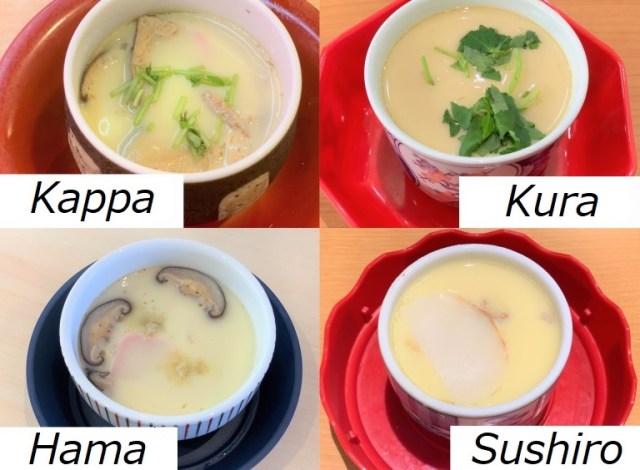
If you skip this sometimes-overlooked part of a traditional sushi restaurant meal, you’re missing out!
Chawanmushi is a Japanese sushi restaurant staple. It’s a savory, steamed egg custard flavored with Japanese broth, usually cooked with added tasty ingredients like mushrooms, shrimp, gingko nuts, or whatever else you want to put in there. Of course, every self-respecting sushi restaurant has its own version, but which one is best?
That is, of course, where we come in. Our Japanese-language reporter and food aficionado K. Masami, a frequent customer at conveyor belt sushi restaurants, decided to visit her four favorite chains, Sushiro, Kappa Sushi, Kura Sushi, and Hama Sushi, and try each of their chawanmushi dishes. Which one is the best? Let’s find out.
First up is Kura Sushi. The special ingredient in their chawanmushi is imitation crab.
This cup had plenty of crab sticks. Every spoonful came up with a piece! It was super tasty. It also had scallops and Japanese parsley, too, and was plenty juicy from its broth. In fact, this chawanmushi was so flavorful that Masami felt as if her whole body was becoming infused with its deliciousness.
Next up was Sushiro’s chawanmushi. Though Sushiro is currently offering a special seasonal version that’s served cold, Masami resisted the urge to order that and instead went with the regular warm one, for the accuracy of her investigation. Upon opening the lid, she was pleasantly surprised to see a huge slice of kamaboko, or fish cake stick, baked into the top. “I see,” she mused, frantically scribbling this development in her notebook. “Not bad, not bad.”
Sushiro’s chawanmushi had lots of other delicious ingredients, including shrimp and scallops, but the key player in this dish was the chunky chicken. Just the seafood would have been plenty, but the chicken turned this dish into a feast! Masami was very pleased.
Let’s compare that to Hama Sushi’s chawanmushi. The restaurant boasts that it uses a katsuo dashi broth made of bonito from the Yaizu area of Shizuoka Prefecture, so Masami was prepared for it to be a major contender. This recipe contains shiitake mushrooms, bamboo shoots, kamaboko slices, chicken, and gingko nuts.
It was a more classic style of chawanmushi that Masami thoroughly appreciated. Though it wasn’t the flashy sort, it left nothing to be desired; if chawanmushi is what you want, this will most certainly satisfy all your needs, and the Yaizu katsuo dashi broth added a very light flavor that complemented everything very well.
Lastly, let’s take a look at Kappa Sushi’s chawanmushi. This one felt like it had a lot more ingredients than the other three. With Japanese parsley, kamaboko slices, shrimp, and white fish, it is guaranteed to not leave you hungry. Masami was especially amazed by the giant slice of shiitake she got in hers.
In fact, she got not one but three huge pieces of shiitake. Because of them, this chawanmushi felt especially juicy, as with every bite of the shiitake, delicious broth filled her mouth. The fish also lent this dish a great degree on substantiality. “Delicious,” said Masami, nodding enthusiastically.
So, in the end, which one was the best? They all sound delicious, but one of them must stand out over the others, right? After finishing her tasting and reviewing her notes, Masami came to a conclusion:
“They’re all delicious in their own way!”
…Okay, clearly Masami couldn’t make a decision. She said each one has its own characteristics, so it could entirely depend on the diner’s preferences. Depending on what kind of ingredients you like or dislike, and how you prefer your chawanmushi, you might like one over the other, bur her conclusion was “For me, I liked them all!”
By the way, each of the sushi restaurants charged only 180 yen (US$1.68) for their chawamushi, so consider ordering one alongside your favorite nigiri sushi the next time you go. Once you’ve tried them all, let us know which one you think is the best!
Photos © SoraNews24
● Want to hear about SoraNews24’s latest articles as soon as they’re published? Follow us on Facebook and Twitter!
[ Read in Japanese ]

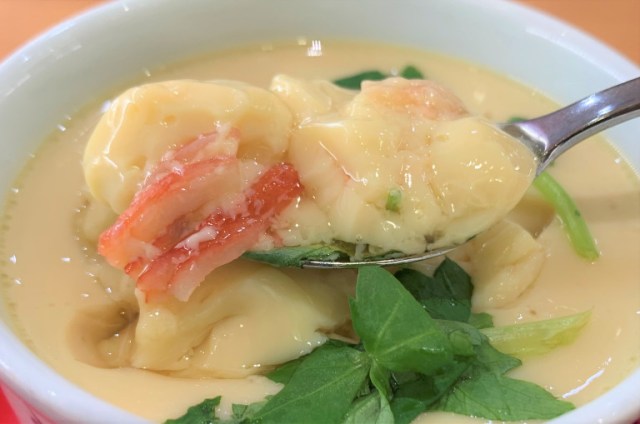
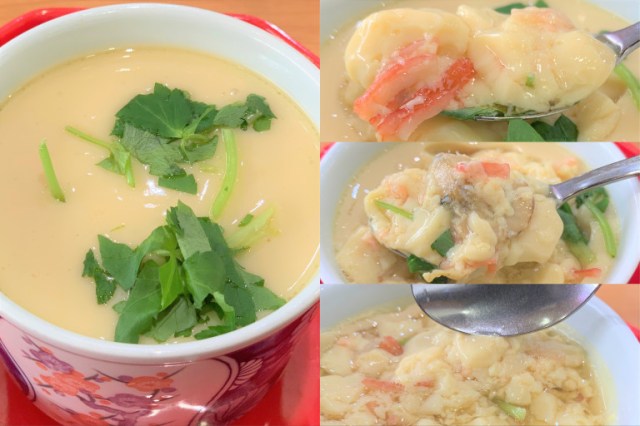
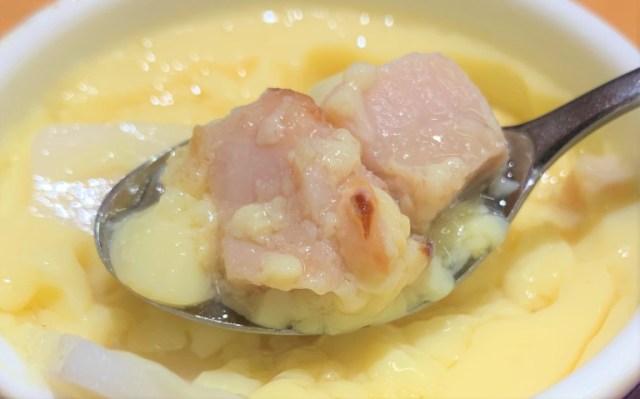
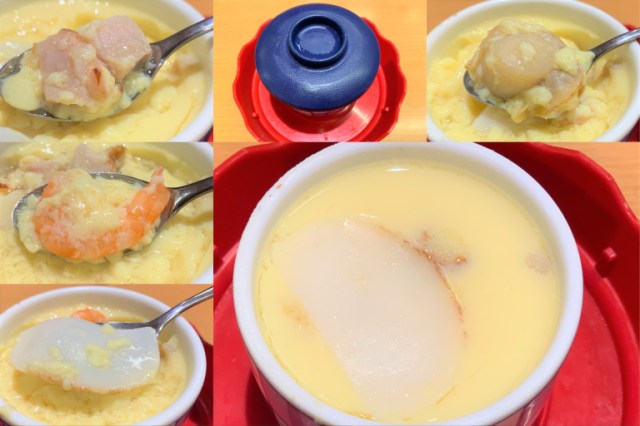
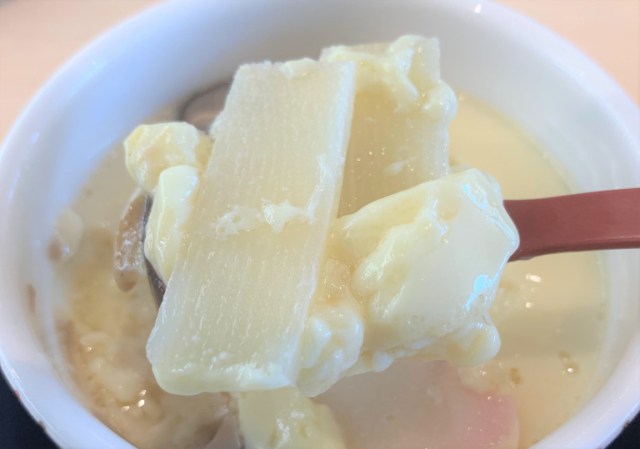
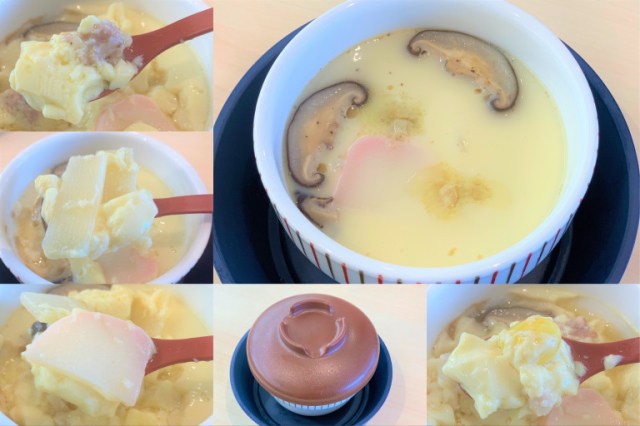
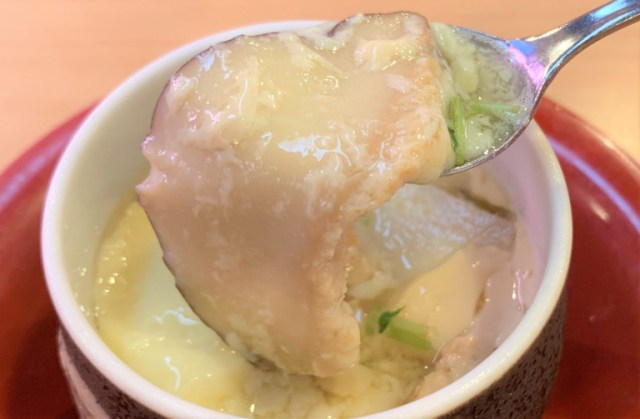
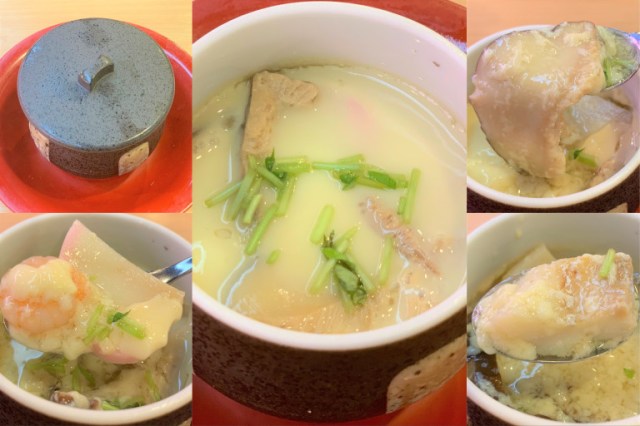
 Which Japanese conveyer belt sushi chain has the best steamed egg custard? 【Taste test】
Which Japanese conveyer belt sushi chain has the best steamed egg custard? 【Taste test】 Which Japanese conveyor belt sushi chain has the best aosa miso soup?【Taste test】
Which Japanese conveyor belt sushi chain has the best aosa miso soup?【Taste test】 How to turn your leftover instant ramen broth into delicious chawanmushi Japanese egg custard
How to turn your leftover instant ramen broth into delicious chawanmushi Japanese egg custard Which Japanese conveyor belt sushi chain has the best egg sushi?【Taste test】
Which Japanese conveyor belt sushi chain has the best egg sushi?【Taste test】 Which Japanese conveyor belt sushi chain has the best yellowtail sushi?【Taste test】
Which Japanese conveyor belt sushi chain has the best yellowtail sushi?【Taste test】 Foreigner’s request for help in Tokyo makes us sad for the state of society
Foreigner’s request for help in Tokyo makes us sad for the state of society Seaside scenery, history, and so many desserts on Yokohama’s Akai Kutsu【Japan Loop Buses】
Seaside scenery, history, and so many desserts on Yokohama’s Akai Kutsu【Japan Loop Buses】 Japanese city loses residents’ personal data, which was on paper being transported on a windy day
Japanese city loses residents’ personal data, which was on paper being transported on a windy day Should you add tartar sauce to Japanese curry rice? CoCo Ichi makes diners an unusual offer
Should you add tartar sauce to Japanese curry rice? CoCo Ichi makes diners an unusual offer Harajuku Station’s beautiful old wooden building is set to return, with a new complex around it
Harajuku Station’s beautiful old wooden building is set to return, with a new complex around it Akihabara pop-up shop sells goods made by Japanese prison inmates
Akihabara pop-up shop sells goods made by Japanese prison inmates Red light district sushi restaurant in Tokyo shows us just how wrong we were about it
Red light district sushi restaurant in Tokyo shows us just how wrong we were about it French Fries Bread in Tokyo’s Shibuya becomes a hit on social media
French Fries Bread in Tokyo’s Shibuya becomes a hit on social media Ghibli Park now selling “Grilled Frogs” from food cart in Valley of Witches
Ghibli Park now selling “Grilled Frogs” from food cart in Valley of Witches McDonald’s Japan releases a pancake pie for new retro kissaten coffeeshop series
McDonald’s Japan releases a pancake pie for new retro kissaten coffeeshop series McDonald’s new Happy Meals offer up cute and practical Sanrio lifestyle goods
McDonald’s new Happy Meals offer up cute and practical Sanrio lifestyle goods Japanese ramen restaurants under pressure from new yen banknotes
Japanese ramen restaurants under pressure from new yen banknotes Studio Ghibli releases new action figures featuring Nausicaä of the Valley of the Wind characters
Studio Ghibli releases new action figures featuring Nausicaä of the Valley of the Wind characters New private rooms on Tokaido Shinkansen change the way we travel from Tokyo to Kyoto
New private rooms on Tokaido Shinkansen change the way we travel from Tokyo to Kyoto Tokyo Tsukiji fish market site to be redeveloped with 50,000-seat stadium, hotel, shopping center
Tokyo Tsukiji fish market site to be redeveloped with 50,000-seat stadium, hotel, shopping center All-you-can-drink Starbucks and amazing views part of Tokyo’s new 170 meter-high sky lounge
All-you-can-drink Starbucks and amazing views part of Tokyo’s new 170 meter-high sky lounge Beautiful Ghibli sealing wax kits let you create accessories and elegant letter decorations【Pics】
Beautiful Ghibli sealing wax kits let you create accessories and elegant letter decorations【Pics】 Studio Ghibli releases Kiki’s Delivery Service chocolate cake pouches in Japan
Studio Ghibli releases Kiki’s Delivery Service chocolate cake pouches in Japan New definition of “Japanese whiskey” goes into effect to prevent fakes from fooling overseas buyers
New definition of “Japanese whiskey” goes into effect to prevent fakes from fooling overseas buyers Our Japanese reporter visits Costco in the U.S., finds super American and very Japanese things
Our Japanese reporter visits Costco in the U.S., finds super American and very Japanese things Studio Ghibli unveils Mother’s Day gift set that captures the love in My Neighbour Totoro
Studio Ghibli unveils Mother’s Day gift set that captures the love in My Neighbour Totoro More foreign tourists than ever before in history visited Japan last month
More foreign tourists than ever before in history visited Japan last month New Pokémon cakes let you eat your way through Pikachu and all the Eevee evolutions
New Pokémon cakes let you eat your way through Pikachu and all the Eevee evolutions Sales of Japan’s most convenient train ticket/shopping payment cards suspended indefinitely
Sales of Japan’s most convenient train ticket/shopping payment cards suspended indefinitely Sold-out Studio Ghibli desktop humidifiers are back so Totoro can help you through the dry season
Sold-out Studio Ghibli desktop humidifiers are back so Totoro can help you through the dry season Japanese government to make first change to romanization spelling rules since the 1950s
Japanese government to make first change to romanization spelling rules since the 1950s Ghibli founders Toshio Suzuki and Hayao Miyazaki contribute to Japanese whisky Totoro label design
Ghibli founders Toshio Suzuki and Hayao Miyazaki contribute to Japanese whisky Totoro label design Doraemon found buried at sea as scene from 1993 anime becomes real life【Photos】
Doraemon found buried at sea as scene from 1993 anime becomes real life【Photos】 Tokyo’s most famous Starbucks is closed
Tokyo’s most famous Starbucks is closed One Piece characters’ nationalities revealed, but fans have mixed opinions
One Piece characters’ nationalities revealed, but fans have mixed opinions We asked a Uniqlo employee what four things we should buy and their suggestions didn’t disappoint
We asked a Uniqlo employee what four things we should buy and their suggestions didn’t disappoint Princesses, fruits, and blacksmiths: Study reveals the 30 most unusual family names in Japan
Princesses, fruits, and blacksmiths: Study reveals the 30 most unusual family names in Japan Which Japanese conveyor belt sushi chain has the best aburi salmon sushi?【Taste test】
Which Japanese conveyor belt sushi chain has the best aburi salmon sushi?【Taste test】 Which Japanese conveyor belt sushi chain has the best negitoro sushi?【Taste test】
Which Japanese conveyor belt sushi chain has the best negitoro sushi?【Taste test】 Which Japanese conveyor belt sushi chain has the best salad sushi?【Taste test】
Which Japanese conveyor belt sushi chain has the best salad sushi?【Taste test】 Which Japanese conveyor belt sushi chain has the best tuna sushi?【Taste test】
Which Japanese conveyor belt sushi chain has the best tuna sushi?【Taste test】 Which Japanese conveyor belt sushi chain has the best squid sushi?【Taste test】
Which Japanese conveyor belt sushi chain has the best squid sushi?【Taste test】 Which Japanese conveyor belt sushi chain has the best scallop sushi?【Taste test】
Which Japanese conveyor belt sushi chain has the best scallop sushi?【Taste test】 Which Japanese conveyor belt sushi chain has the best iwashi sardine sushi?【Taste test】
Which Japanese conveyor belt sushi chain has the best iwashi sardine sushi?【Taste test】 Which Japanese conveyor belt sushi chain has the best bintoro sushi?【Taste test】
Which Japanese conveyor belt sushi chain has the best bintoro sushi?【Taste test】 Which Japanese conveyor belt sushi chain has the best salmon sushi?【Taste test】
Which Japanese conveyor belt sushi chain has the best salmon sushi?【Taste test】 Which Japanese conveyor belt sushi chain has the best prawn sushi?【Taste test】
Which Japanese conveyor belt sushi chain has the best prawn sushi?【Taste test】 Which Japanese conveyor belt sushi chain has the best mackerel sushi?【Taste test】
Which Japanese conveyor belt sushi chain has the best mackerel sushi?【Taste test】 Cups made of kelp from Hokkaido add a touch of umami to whatever you put inside
Cups made of kelp from Hokkaido add a touch of umami to whatever you put inside What’s for dinner? A US$113/3.3-pound sushi bowl from one of Japan’s favorite cheap restaurants
What’s for dinner? A US$113/3.3-pound sushi bowl from one of Japan’s favorite cheap restaurants 2021’s top stories in Japanese food and cooking news【SoraNews24 Year in Review】
2021’s top stories in Japanese food and cooking news【SoraNews24 Year in Review】 Which Japanese conveyor belt sushi chain has the best saltwater eel sushi?【Taste test】
Which Japanese conveyor belt sushi chain has the best saltwater eel sushi?【Taste test】 Which Japanese conveyer belt sushi chain has the tastiest sea snail, if any?【Taste test】
Which Japanese conveyer belt sushi chain has the tastiest sea snail, if any?【Taste test】
Leave a Reply